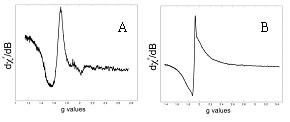
Nikolay Gerasimchuk
Missouri State University, USA
Title: Preparation and Characterization of Novel NLO Solids in As-O-Mo, As(P)-O-Mo(W) and As(P)-O-Nb(W) systems
Biography
Biography: Nikolay Gerasimchuk
Abstract
Mixed valence solids such as oxides based on molybdenum blues and tungsten bronzes recently found useful applications as semiconductors and catalysts. Despite some considerable efforts in the past, many of these interesting systems were not sufficiently investigated. We attempted systematic studies in this area of solid state chemistry and prepared several new systems for their subsequent investigations and evaluation of practical applications in the outlined above fields. Thus, interactions between well mixed fine powders of As2O3, P2O5, MoO3, WO3 and Nb2O5 at different stoichiometry in quartz ampoules under vacuum at ~1000oC in the presence of metallic molybdenum (or niobium) within several weeks lead to shiny dichroic crystalline materials formed in cooler parts of the reaction vessel. An addition of small quantities of metals – Mo or Nb – was done with the aim of partial reduction of their highly oxidized Mo(VI), W(VI) or Nb(V) species to corresponding Mo(V), W(V) and Nb(IV) centers in order to form mixed valence solids. Sublimed crystals were investigated using a variety of techniques including XRD methods (powder, single crystals), spectroscopy (visible diffusion reflectance, IR, Raman and EPR), second harmonic generation (SHG), TG/DSC under N2 and air atmosphere, and electrical conductivity studies.
Results evidenced the formation of new, complex solids of previously unknown compositions that all crystallized in non-centrosymmetric, polar space groups. There were Mo(V) and Nb(IV) species detected in lattices by the EPR spectroscopy (Figure 1) both in coupled state, and as isolated centers of slightly different symmetry.
Thermogravimetric data and careful ICP analyses studies allowed accurate determination of content of solids and % of reduced metal ions. All new solids exhibit strong SHG effect based on YAG 1064 nm tests.
Structures of new solids and aspects of their practical usefulness are discussed.

Figure 1. The EPR spectra of Nb(IV) species in crystalline Nb5P3O18 (A) and Mo12P4O45 powder at 80K showing both Mo(V) and trapped oxygen radical in the lattice (B).
Recent Publications
1. Cheadle, C.; Ratcliff, J.; Berezin, M.; Pal’shin, V.; Nemykin, V.N.; Gerasimchuk, N. Dalton Trans, 2017, 46(39), 13562-13581.
2. Solntsev, P.V.; Anderson, D.R.; Rhoda, H.M.; Belosludov, R.V.; Fathi-Rasekh, M.; Maligaspe, E.; Gerasimchuk, N.N.; Nemykin, V.N. Crystal Growth & Design, 2016, 16 (2), 1027–1037.
3. Pariyar, A.; Gopalakrishnan, S.; Stansbery, J.; Patel, L. R.; Liang, X.; Gerasimchuk, N.; Choudhury, A. RSC Advances. 2016, 6, 38533- 38540.
4. Haleya, A.L.; Broadbent, L.N.; McDaniel, L.S.; Heckman, S.T.; Hinkle, C.H.; Gerasimchuk, N.N.; Hershberger, J.C.; Mebi, C.A. Polyhedron, 2016, DOI:10.1016/j.poly.2015.12.031
5. He, S.; Toukrakis, G.; Berezin, O.; Gerasimchuk, N.; Zhang, H.; Zhou, H.; Izraely, A.; Akers, W.J.; Berezin, M.Y. J. Mater. Chemistry, C. 2016, DOI: 10.1039 /c6tc001225.
6. Li, Y.; Dutta, T.; Gerasimchuk, N.; Wu, S.; Shetye, K.; Jin, L.; Wang, R.; Zhu, D-M.; Peng, Z. ACS Appl. Mater. Interfaces, 2015, 7 (18), 9372−9384.

